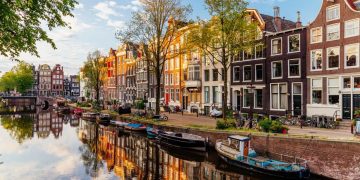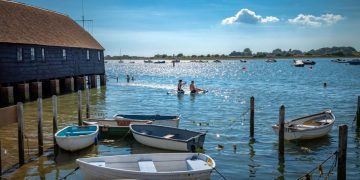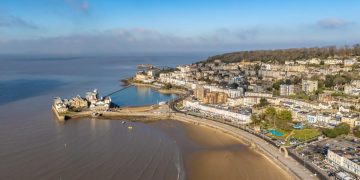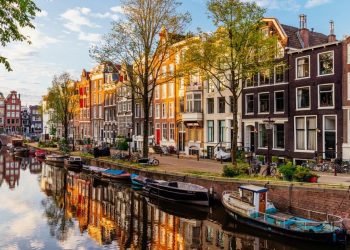
The Canary Islands have been named on Fodor’s ‘No List’ for 2026 — a unique travel guide that encourages wanderlust and restraint in the same breath.
The annual list, which highlights destinations where tourism is placing unsustainable pressure on the land and local communities, does not call for a boycott.
It’s a reminder to think long and hard about where you’re travelling and consider giving hotspots – that clearly need a breather – a break.
And there is no doubt that behind the white sands and sparkling turquoise waters of the Canaries, locals are questioning how much more their home can take.
In the first half of 2025, the archipelago of eight inhabited islands welcomed 7.8 million visitors and processed more than 27 million airport passengers, a 5% increase on the previous year.
Tourism accounts for some 35% of GDP, and employs about 40% of its 2.2 million population. But popularity comes at a price.
Over the past two years, thousands have taken to the streets of Tenerife, Gran Canaria and Lanzarote to protest soaring housing costs,environmental strain and community erosion — all caused, they say, by unregulated property development and mass tourism.
Marching under the banner ‘Canarias tiene un límite‘ (The Canaries have a limit), locals say they’ve had enough. You can see it in this video:
Win a five day tour to Krakow, Poland

We’ve teamed up with Newmarket Holidays to offer one lucky Metro reader the opportunity to WIN an unforgettable escorted tour to Krakow.
Get ready for a five-day escape through Poland’s former royal capital, where history, culture, and striking architecture await at every turn. Explore the UNESCO-listed treasures of the enchanting Old Town, stroll along cobblestone streets, and soak in the city’s unique charm.
Competition closes November 30, T&Cs apply.
It’s a problem mirrored across southern Europe, in cities such as Venice, Barcelona and the Greek islands of Santorini and Mykonos.
‘One of the issues coming up time and again for Spain, Portugal and Italy in particular is that most tourists go to very few destinations,’ Zoe Adjey, senior lecturer at the Institute of Tourism and Hospitality at the University of East London, tells Metro.
‘Overtourism is a serious problem in a small number of places. Ironically, the majority of these countries don’t see any benefit from tourism at all.’
Fodor's 2026 'No List'
- Antarctica
- Canary Islands
- Glacier National Park (Montana, US)
- Isola Sacra (Rome, Italy)
- The Jungfrau region, Switzerland
- Mexico City
- Mombasa, Kenya
- Montmartre (Paris, France)
Fodor’s notes that for Canarians, tourism is both a lifeline and a burden.
The islands are clocking record visitor spending, but locals see little of it.
Government regulations that allow residents to rent properties on Airbnb and Booking.com have driven up rental prices and property values so much that young Canarians cannot afford their own homes.
It’s cheap and easy for holidaymakers to stay in a short-term let, but the reality is, it’s pricing locals out of their homes.
Beaches, once a free meeting place for families and friends to come together, are often closed due to pollution and sewage runoff.

Earlier this year, a report by France24 revealed that the equivalent of 40 Olympic-sized swimming pools of wastewater is being discharged into the sea around the Canary Islands every day.
It paints a stark picture that goes far beyond tourism.
ATAN, one of Tenerife’s oldest environmental groups, told Fodor’s: ‘We are losing our identity, culture, and, ultimately, our right to exist as a community.
‘Tourism has become unlimited, mass-oriented, and largely low-cost party tourism that doesn’t come to discover the islands, but to consume a fake backdrop.’
What can we do to help?
The Canary Islands have long been one of the top destinations for British travellers.
Aena, Spain’s national airport operator, reported that 5.7 million Brits flocked there during 2023, accounting for more than one third of the total 14.1 million international (aka non-Spanish) passengers.
And there are things that we, as holidaymakers, can do to help. The most effective? Go elsewhere.
Best place you’ve been in Spain?
-
Madrid
-
Barcelona
-
Seville
-
Granada
-
Valencia
-
Somewhere else
From ancient Cadiz to the forgotten Pueblos Blancos, Spain has dozens of beautiful places to explore once you step off the tourist track.
Here are our top picks of the lesser-known Spanish destinations that are crying out for visitors in 2026.
1. The Cíes Islands
A little-known Spanish archipelago that is often compared to the Caribbean for its deep-blue seas and beachy beauty.

Lined up off Galicia’s meandering Rías Baixas coast, this ‘truly magical’ destination is made up of three main islands: Monte Agudo, O Faro, and San Martiño, a 45-minute boat ride from Vigo on the mainland.
Part of the UNESCO-recognised Atlantic Islands of Galicia National Park, it was famously revered by the Romans as the ‘islands of the Gods’ — yet for all its beauty, it remains largely unspoiled by tourism.
But it wasn’t always that way. Check out our guide to find out more.
2. Cadiz
Often overshadowed by glamorous Seville, Cadiz is a 3,000-year-old coastal gem and one of the oldest cities in Western Europe.

Its quaint streets are steeped in history, lined with sun-drenched plazas, centuries-old churches and whitewashed buildings from its maritime past.
Beyond its history, Cadiz boasts golden beaches, a coastal promenade and some of Spain’s best seafood. Visitors can soak up the sun at La Caleta Beach, take in panoramic views from Tavira Tower, or explore the old town’s winding alleyways.
Despite everything it has to offer, it remains far less crowded than Spain’s more famous cities.
Metro’s Sama Ansari Pour visited last year and described Cadiz as ‘a walk through time’, with every corner offering a glimpse into its past.
‘If you’re not a fan of big crowds, this lesser-known gem could be perfect for you,’ she writes.
3. Estepona
This charming coastal town, tucked on the edge of Costa del Sol, remains a hidden gem despite its location in one of Spain’s most visited regions.

Metro’s Sophie-May Williams visited the ‘humble town’ last year and noted that while 12 million international tourists flocked to Andalusia in 2023, just 253,376 (2%) stopped in Estepona.
Check out our guide on things to see and do, where to eat and where to stay.
4. San Sebastián
San Sebastián is the crown jewel of the Basque region that runs along Spain’s dazzling northern coast.
It’s a beach town turned Michelin hotspot with world-class cuisine that is comparatively unspoiled by mass tourism, especially if you visit in shoulder season after the San Sebastián International Film Festival has packed up in September.

With the second-most Michelin stars per capita and an enviable claim to the title of most bars per person, this is a destination for people who eat differently.
The Basques even have a name for it: pintxo, aka hopping from bar to bar and sampling bite-sized bits of culinary art.
Metro‘s Mel Evans spent a weekend eating and drinking there last year and couldn’t rave about it enough.
5. Murcia
Verdant landscapes and a Mediterranean climate have earned one up-and-coming Spanish city a beautiful nickname: ‘The Garden of Europe.’

Murcia, in southeastern Spain, has been described as Spain’s ‘unknown province’ — even for the Spanish.
It won’t stay that way for long, though, because low-cost airlines, including Ryanair and easyJet, have just started flying there for the winter season.
It’s a solid place for reliable year-round sun, with temperatures reaching 26°C in October and 21°C in November.
And with stunning coastline, world-class local wine and maximalist architecture that rivals Madrid, it’s easy to see the appeal.
The 'secret' Canary Island you may not have heard of
If you’re still set on visiting the Canaries in 2026, you might consider heading to La Palma, a small island with a forested terrain, narrow cobbled streets and glistening turquoise waters.
Unlike its neighbour, Tenerife, which is renowned for being more of a party island, life on La Palma is laid back. This place is more about nature, from hiking, kayaking, and swimming, than it is about singing karaoke in Playa de las Américas.
Check out our full travel guide here.

































